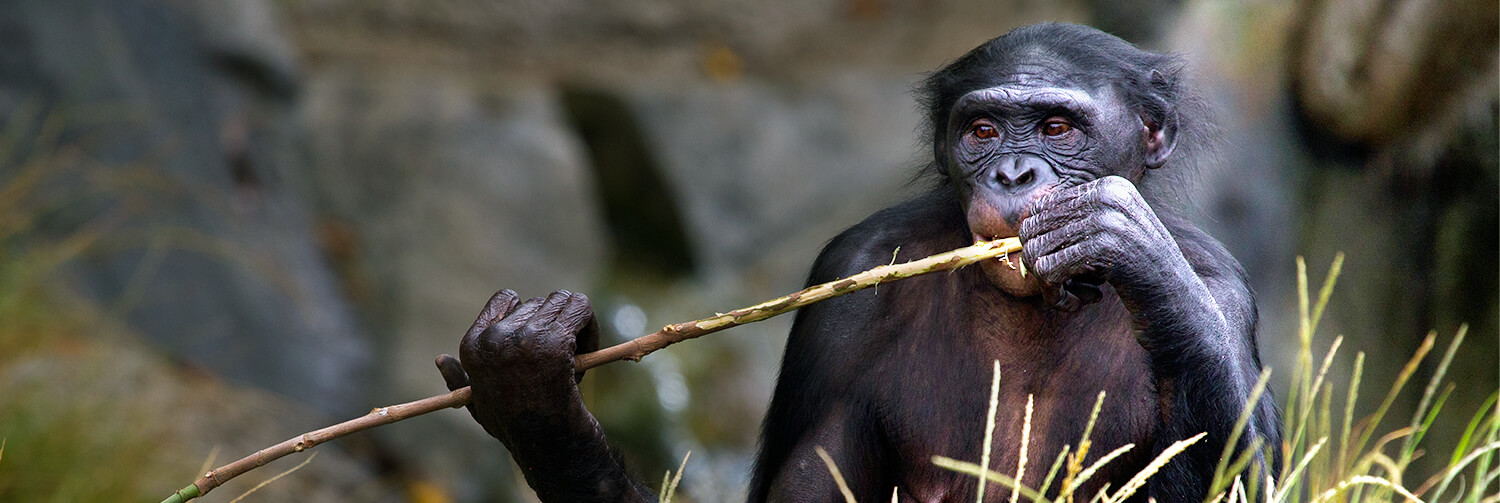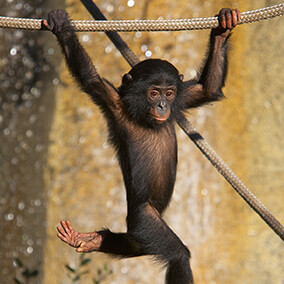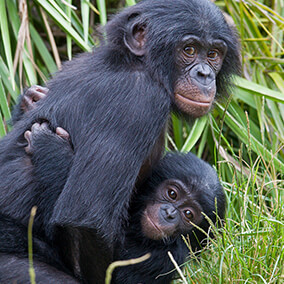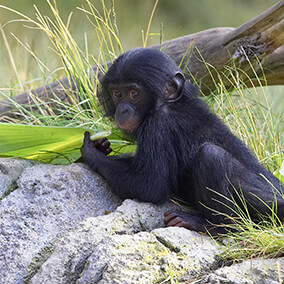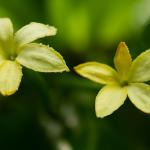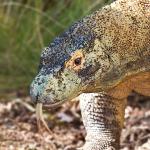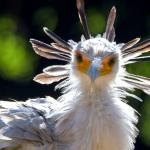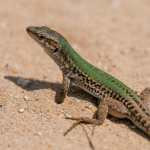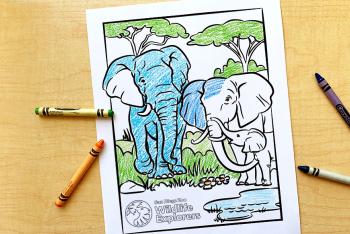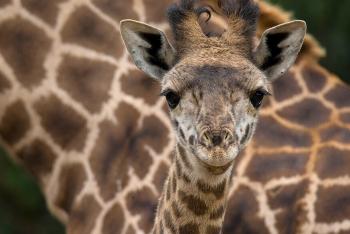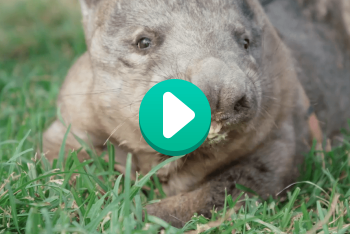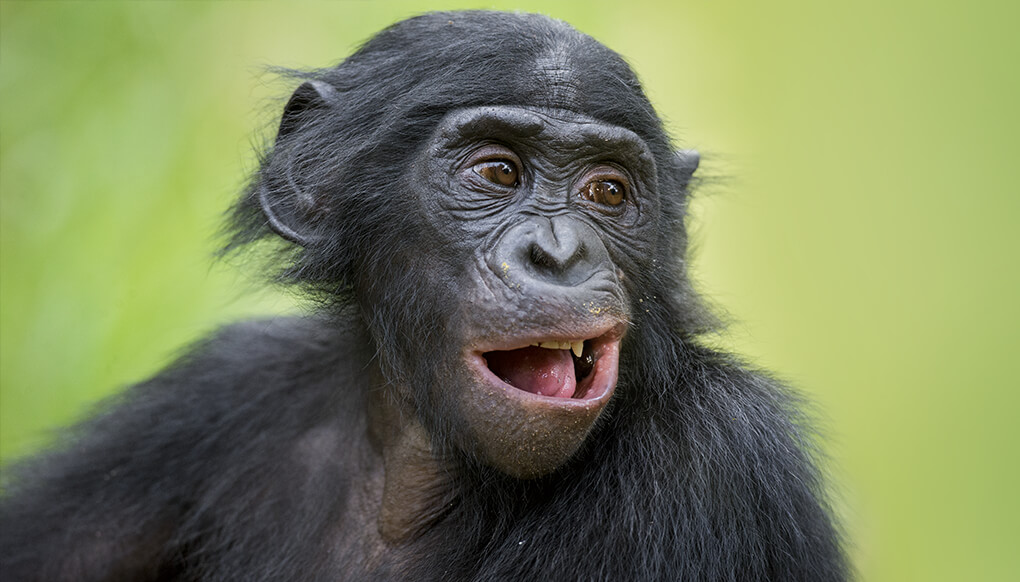
Bonobo

Mammals


Endangered
facts


Bonobos eat mostly fruit, leaves, and stems. Sometimes, they also eat worms, insects, and small fish.

description
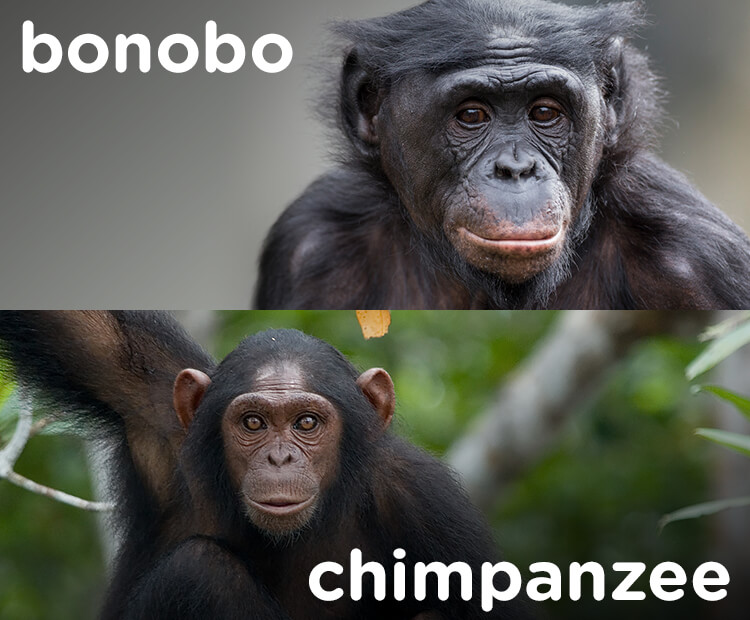
Not a chimp
Scientists once thought the bonobo was just a smaller version of the chimpanzee, and they called it a “pygmy chimpanzee.” But don’t be fooled! Bonobos and chimpanzees are two completely different species. For one thing, bonobos are more slender. They have smaller heads and smaller ears. Both species are members of the great ape family, along with gorillas and orangutans.
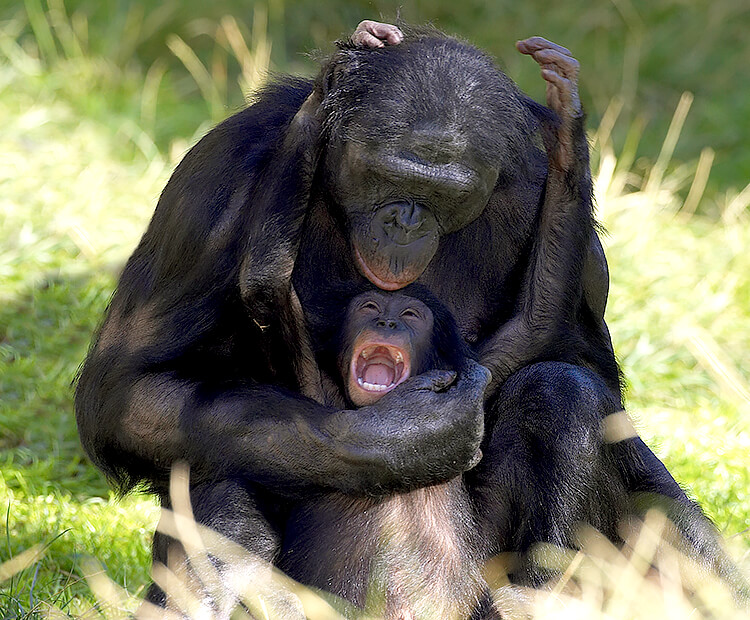
Mom's in charge
In bonobo society, females take charge. Youngsters stay close to Mom for several years while they grow and learn how to be a part of bonobo society. A daughter becomes independent, but she shares a close bond with her mother. A son stays with his mother all his life and relies on her for protection. Bonobo groups teach their young social skills, use tools, and work together for the good of the entire troop.
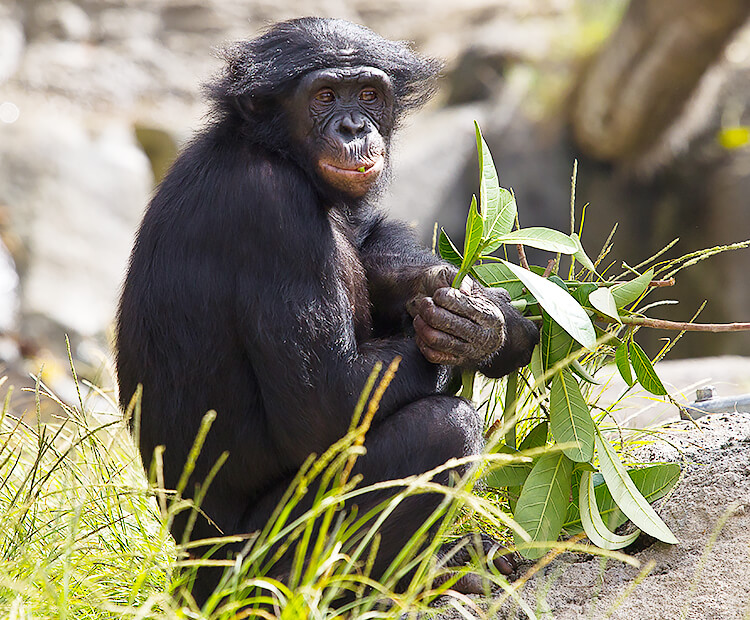
Good night rest
Nests aren't just for the birds! Bonobos use leaves and twigs to build sleeping nests in the forks of trees each evening. They builds their nests close to other group members. This way, they can help each other look out for predators such as leopards and snakes.

